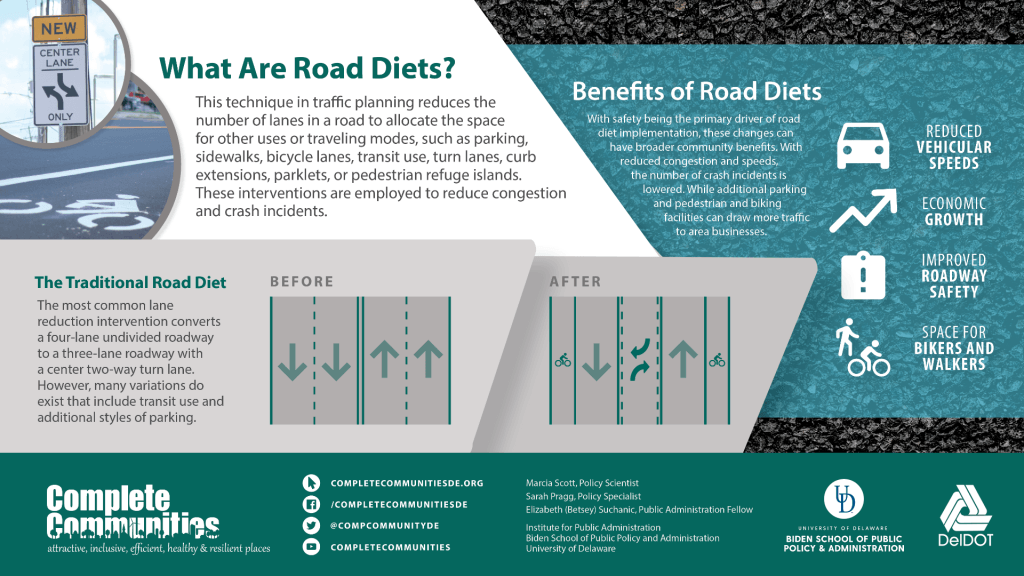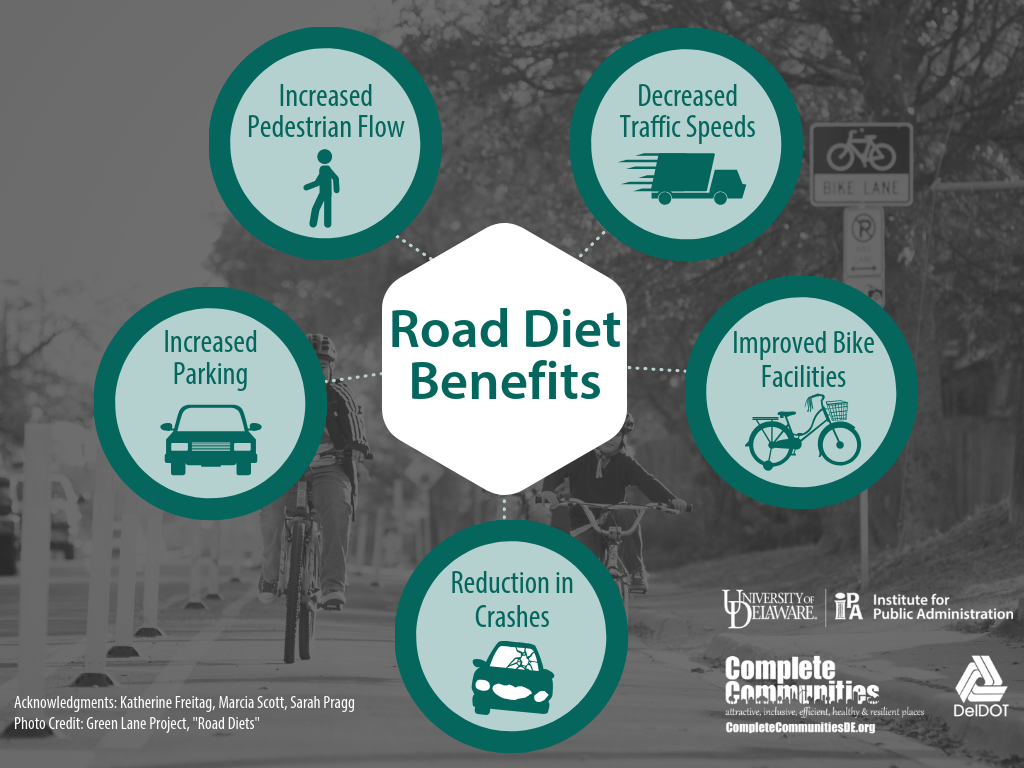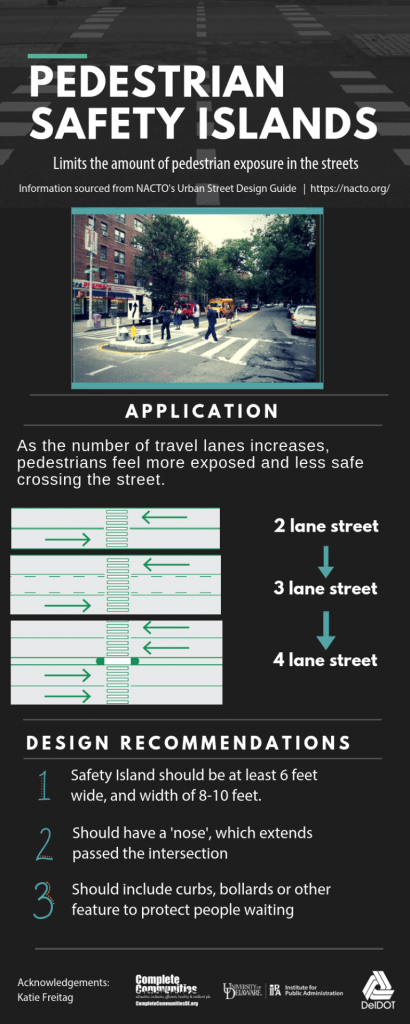A “Road Diet” is roadway reconfiguration that involves narrowing or eliminating travel lanes to calm traffic and increase safety of all roadway users. A classic road diet converts a four-lane undivided roadway to a three-lane roadway with a center two-way turn lane. Road diets can also remove vehicle lanes from a roadway and reallocate the extra space for other uses or traveling modes, such as parking, sidewalks, bicycle lanes, transit use, turn lanes, curb extensions, parklets, or pedestrian refuge islands. Implementing Road Diets improves mobility and accessibility for all users, including pedestrians, bicyclists, and public transit riders. This Spark page explains benefits of road diets, provides examples traffic-calming elements, and provides Delaware-specific examples.





